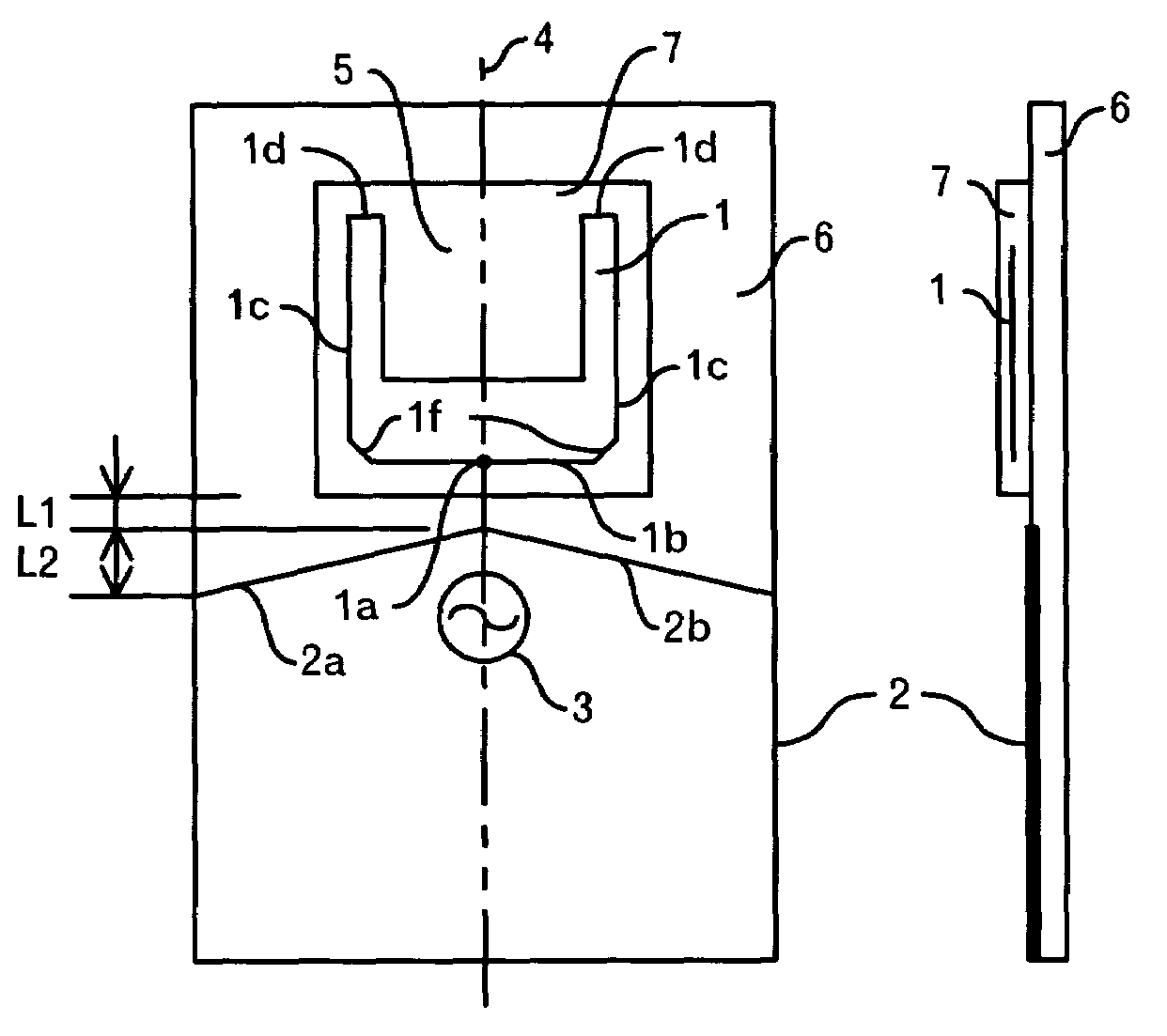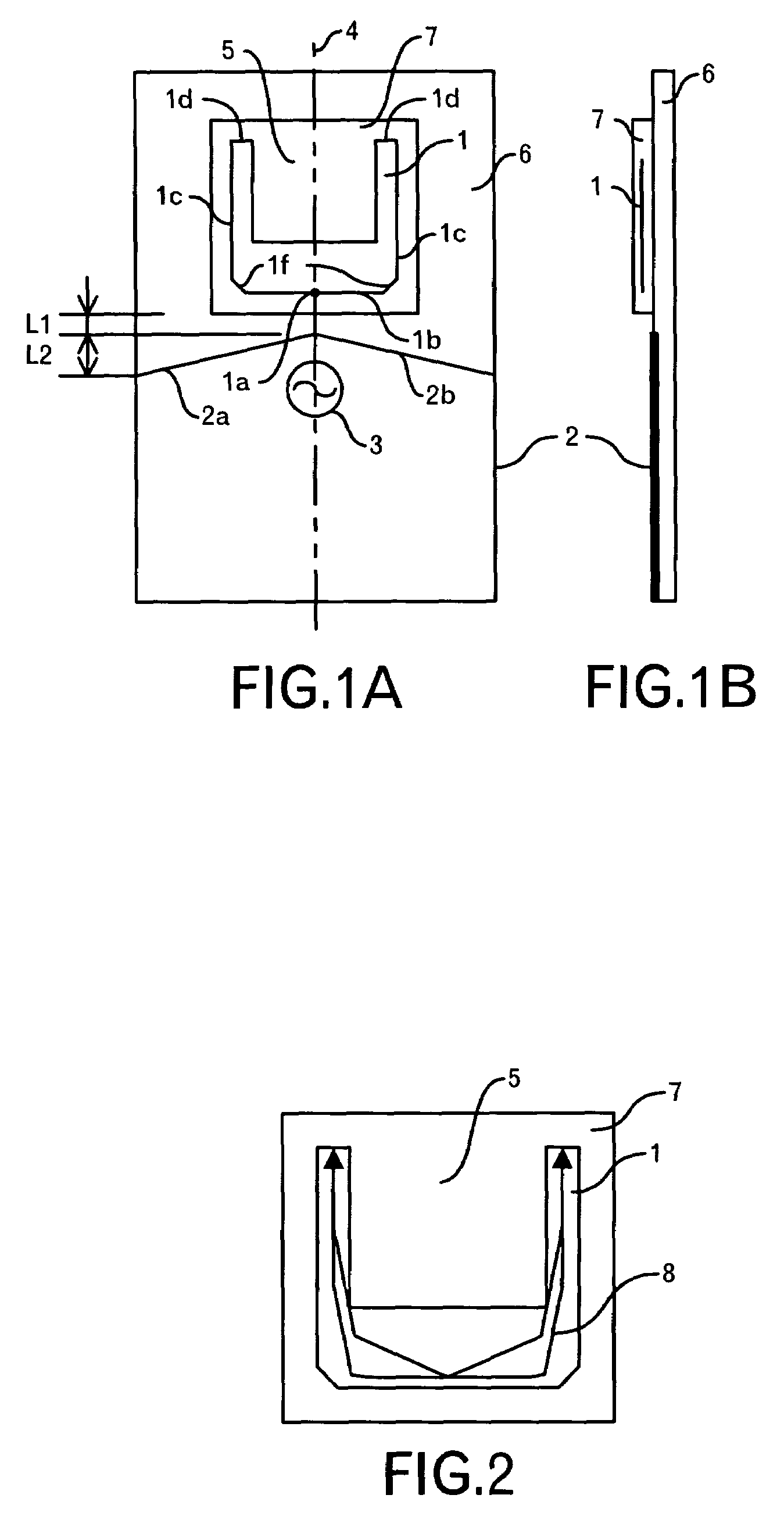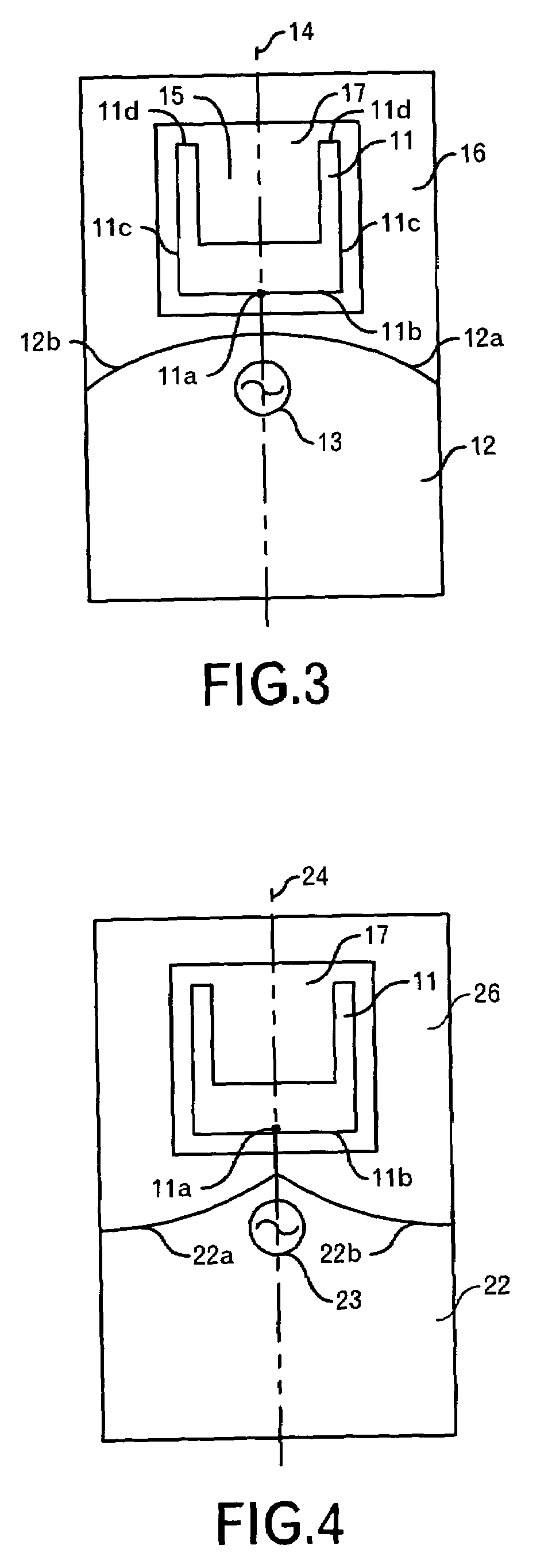Antenna and wireless communication card
a communication card and wide bandwidth technology, applied in the direction of resonant antennas, antenna earthings, elongated active element feeds, etc., can solve the problems of difficult control of antenna characteristics, bad vswr characteristics, difficult to control antenna characteristics, etc., and achieve the effect of widened bandwidth in the low frequency sid
- Summary
- Abstract
- Description
- Claims
- Application Information
AI Technical Summary
Benefits of technology
Problems solved by technology
Method used
Image
Examples
first embodiment
1. First Embodiment
[0051]FIGS. 1A and 1B show the structure of an antenna according to a first embodiment of this invention. The antenna according to the first embodiment includes a dielectric substrate 7 that contains a conductive planar element 1 having a cut-out portion 5 therein and has a dielectric constant of about 20, a ground pattern 2 that is juxtaposed with the dielectric substrate 7 so as to make an interval of L1 (=1.0 mm) from the dielectric substrate 7 and in which a tapered shape is formed with respect to a feed point 1a of the planar element 1, a board 6, such as a printed circuit board (more specifically, a resin board made of FR-4, Teflon (registered trademark) or the like), and a high-frequency power source 3 connected to a feed point 1a of the planar element 1. The size of the dielectric substrate 7 is about 8 mm×10 mm×1 mm. In addition, the bottom side 1b of the planar element 1 is vertical to the line 4 passing through the feed point 1a, and the lateral sides 1...
second embodiment
2. Second Embodiment
[0058]An antenna according to a second embodiment of the present invention comprises a dielectric substrate 17 that contains a planar element 11 therein and has a dielectric constant of about 20, a ground pattern 12 that is juxtaposed with the dielectric substrate 17 and has upper edge portions 12a and 12b that are upwardly convex curved lines, a board 16 such as a printed circuit board or the like, and a high-frequency power source 13 connected to a feed point 11a of the planar element 11 as shown in FIG. 3. The size of the dielectric substrate 17 is about 8 mm×10 mm×1 mm. In addition, the bottom side 11b of the planar element 11 is vertical to a line 14 passing through the feed point 11a, and lateral sides 11c connected to the bottom side 11b are parallel to the line 14. A cut-out portion 15 is provided at the top portion 11d of the planar element 11. The cut-out portion 15 is formed by concaving the top in a rectangular shape from the top portion 11d toward th...
third embodiment
3. Third Embodiment
[0062]As shown in FIG. 4, an antenna according to a third embodiment of the present invention comprises a dielectric substrate 17 containing a planar element 11 having the same shape as the second embodiment, a ground pattern 22 that is juxtaposed with the dielectric substrate 17 and has upper edge portions 22a and 22b which draw downward saturation curves, a board 26 such as a printed circuit board or the like on which the dielectric substrate 17 and the ground pattern 22 are mounted, and a high-frequency power source 23 connected to a feed point 11a of the planar element 11. The ground pattern 22 may be formed inside the board 26.
[0063]The planar element 11 and the ground pattern 12 are designed to be symmetric with respect to a line 24 passing through the feed point 11a. The length (hereinafter referred to as “distance”) of a line segment extending from any point on the bottom side 11b of the planar element 11 to the ground pattern 22 in parallel to the line 24...
PUM
 Login to View More
Login to View More Abstract
Description
Claims
Application Information
 Login to View More
Login to View More - R&D
- Intellectual Property
- Life Sciences
- Materials
- Tech Scout
- Unparalleled Data Quality
- Higher Quality Content
- 60% Fewer Hallucinations
Browse by: Latest US Patents, China's latest patents, Technical Efficacy Thesaurus, Application Domain, Technology Topic, Popular Technical Reports.
© 2025 PatSnap. All rights reserved.Legal|Privacy policy|Modern Slavery Act Transparency Statement|Sitemap|About US| Contact US: help@patsnap.com



